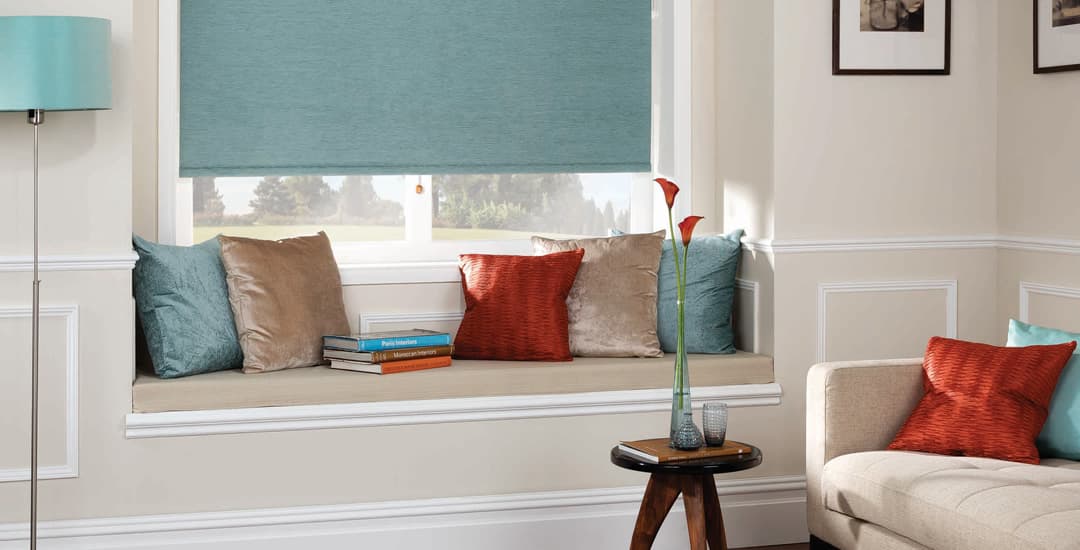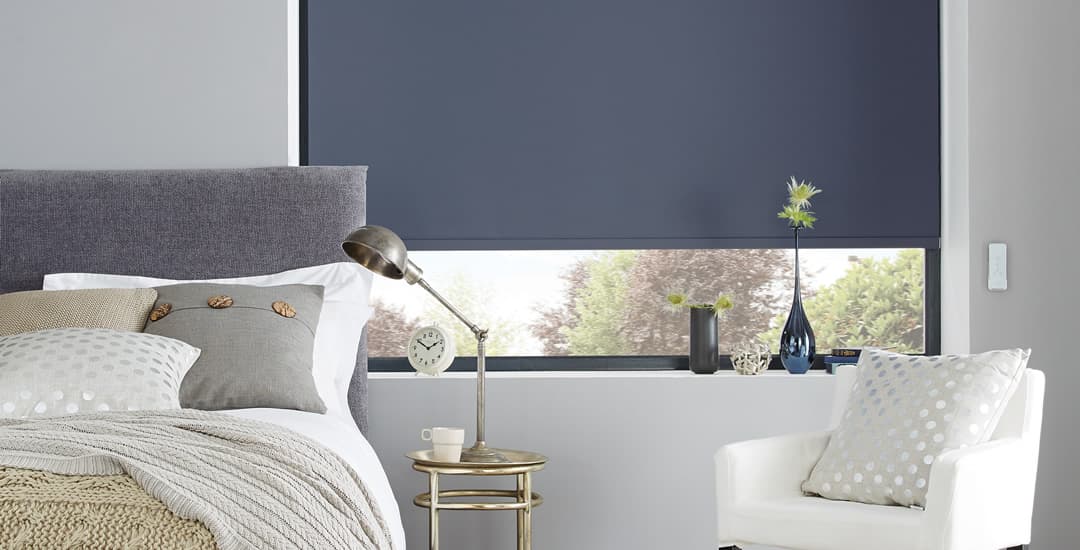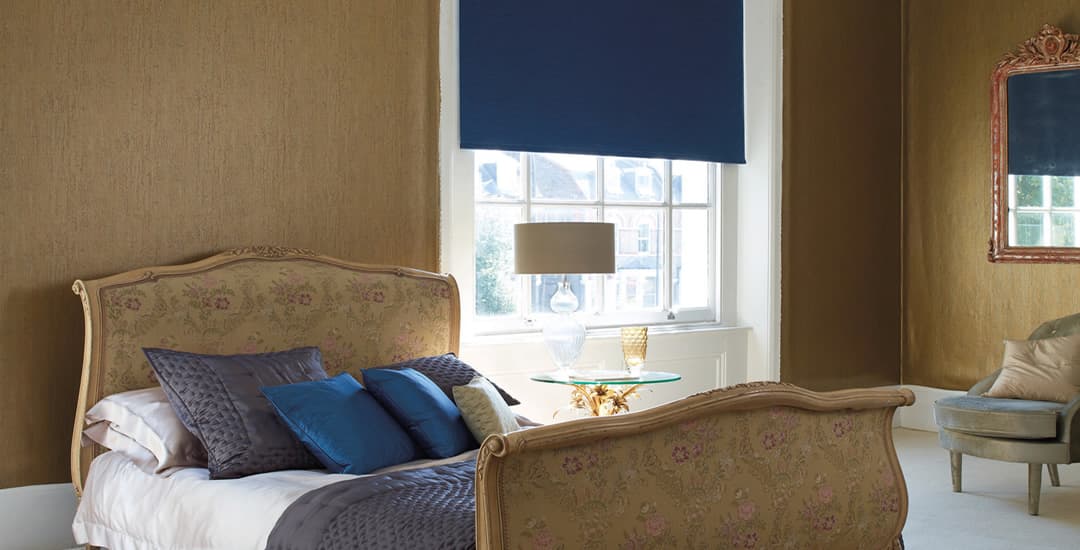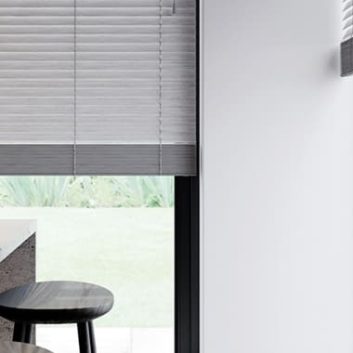
Thermal blackout blinds will pay for themselves in many cases, by actually helping to reduce your energy bills. This means that thermal blackout blinds are environmentally friendly, as they help to reduce your carbon footprint.
This is cool, but thermal blackout blinds aren’t just a one trick pony; they can also help to perform a number of other lesser-known functions too, including letting you hide from visitors you don’t want to see, helping to attract wildlife to your garden, and preventing neighbours from eavesdropping on your conversations… For real.
This blog post will clue you up on six things that thermal blackout blinds do (that you probably didn’t know four of).
Thermal blackout blinds keep sunlight out…
The most obvious benefit of thermal blackout blinds is that they keep sunlight out when this is warranted. Usually this would be to allow you to get a full eight hours’ sleep if you find that natural light wakes you up, and that’s not your thing.
Getting to sleep and staying asleep isn’t the start and end of it though. Blackout blinds for home offices are becoming increasingly popular too, particularly if you work in an organisation where “let’s just jump on a quick Zoom call” seems to be your boss’s favourite saying, and you’re secretly wondering if they’re only doing this to make sure you’re not working in your pyjamas again.
Thermal blackout blinds for home offices allow you to manage your Zoom lighting to the N-th degree and get it just how you want it; and also if you’re a lateral thinking kind of employee, to turn the whole room pitch black with the lights off so that you can claim there must be some problem with your camera, sorry. Pyjamas for work is back on the itinerary…
…And keep internal light in
A blind that stops light from getting into a room also stops light from getting out of said room too.
This is really important to me, as I’m not a fan of visitors and like to maintain a level of plausible deniability that I was not, in fact, just eight feet away from your doorstep-hovering presence when you knocked last night for a chat.
This is a surprisingly popular advantage of blackout blinds for many people; simply being able to choose whether or not people passing by can tell if you’re in or at least, have any lights on.
You might have other reasons for wanting to stop light from escaping from your windows too, like, err, The Blitz.
Or more practically, to reduce your contribution to local light pollution, and even to try to attract hedgehogs and other wildlife to your garden at night, which they’re unlikely to fall for if the whole place is burning like a beacon in the night sky and they can’t see anything other than the insides of their own retinas as a result.
Using thermal blackout blinds to keep light in doesn’t only help local wildlife species that you might be trying to attract to your garden, but can even help to ensure that light pollution from your home doesn’t interfere with the migratory and breeding patterns of wildlife too.
Thermally insulating blackout blinds are eco-friendly on many fronts.
Thermal blackout blinds keep the heat on the inside…

All types of window blinds help to trap heat to an extent, blackout blinds in particular; but thermally insulating blackout blinds that are fitted to the window in such a way to provide the nearest possible thing to a total seal have a far more marked impact in this respect than most people realise.
This is particularly true for people who chose thermally insulating blackout blinds specifically to try to block draughts from windows, or that have windows that seems to leak heat like a holed bucket leaks water.
There are two obvious and significant benefits of this; the first being that you don’t swear in renewed surprise at how cold it is every time you open the door to the room in question. For a bedroom or home office, this can really improve your quality of life.
However, don’t overlook the potential impact a thermally insulated blind can have on your comfort level, even in rooms you spend very little time in, like the almost-universally-cold-in-every-home-that-has-one downstairs toilet.
The second benefit is that keeping the heat you pay for inside of the house means paying less for it.
Thermal blackout blinds can make a significant dent in how much cash you need to throw at hypothermia avoidance each winter. If the main culprit in terms of energy inefficiency in your home is the windows rather than say, an uninsulated roof space or generally poor insulation, you could well find that investing in thermal blackout blinds pays for itself in within a couple of years.
Also, I mentioned above that eco-friendly thermal blackout blinds have strong green credentials by means of reducing light pollution, but of course, reducing your energy expenditure does more than just leave you with a few more beer tokens in your pocket.
Insulating your home to cut your energy usage is itself environmentally friendly, and helps to reduce your carbon footprint; and thermally insulating blackout blinds are particularly ecologically sound as well as saving you money, so it’s a win-win.
…And also keep summer heat on the outside
Another application for thermal blackout blinds is that they can also help to keep rooms at a less burny temperature in the height of summer too. The thermal coating on the blind’s fabric deflects not just sunlight but also external heat and so, reduces the extent to which rooms that heat up via the windows get hot.
This isn’t going to mean that a room you can’t leave your dog in if you want them still functional by evening will suddenly become the fridge; but it can make all of the difference between a room remaining usable in summer versus “usable only as an oven.”
Thermal blackout blinds can protect your fabrics from fading

If you have a conservatory or any other room that is more window than wall and that lets in a lot of light, you probably know how fast direct glaring sun can fade the fabrics of things like a lounge suite or curtains. Because this doesn’t happen all in one hit, sometimes the first you know about it is when you say, turn over a sofa cushion to hide a wine stain (I know I’m not the only one) and find that the other side of it is an entirely different shade to the sun-facing one.
However, if you close your thermal blackout blinds during the day when the sun’s cracking the pavements, they will prevent your fabrics from fading at speed. This will also slow down fading and discoloration in other parts of the room too, including in artwork and also, the wallpaper or paint behind said artwork that is apt to be a whole different shade to the area around it within a couple of years if the room’s a total suntrap.
Thermal insulating blinds can help to soundproof a window
Finally! Thermal blackout blinds can reduce the amount of noise from outside that makes it into your room when the blind is closed. Whatever annoys you; passers-by, traffic sounds, even early morning birdsong that might wake you up will be muted to a degree by thermal blackout blinds, simply by virtue of the fact that they’re close-fitting blinds (assuming you fit them for greatest effect) made of thick fabrics.
This can also reduce the level of noise that gets out too; but manage your expectations here and think in terms of “Sonia next door won’t overhear you talking about her new car” rather than “Sonia next door won’t hear you playing the drums.”
There are special window blinds designed to insulate against noise as one of their specific purposes, such as honeycomb cell blinds; but any solid blind made of a reasonably thick fabric, like a thermal blackout Roman blind or roller blind, will take the edge off background noise getting in, and secret gossip getting out. (Also, close the window.)




